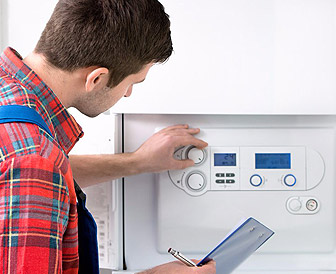
Indoor Air Quality
We tend to think of air pollution as a risk faced outside, but the air we breathe indoors can also be polluted. Smoke, vapors, mold, and chemicals used in certain paints, furnishings, and cleaners can all affect indoor air quality and our health.
Buildings affect overall well-being because most people spend most of their time inside. The U.S. Environmental Protection Agency estimates Americans are indoors 90% of their time – in built environments such as homes, schools, workplaces, places of worship, or gyms.
Indoor air quality is a global issue. Both short- and long-term exposure to indoor air pollution can cause a range of health issues, including respiratory diseases, heart disease, cognitive deficits, and cancer. As one prominent example, the World Health Organization estimates 3.8 million people worldwide die every year from illnesses attributable to harmful indoor air.
Some contaminants are described below:
Air Quality Monitors
The COVID pandemic and repeated wildfires have made many people concerned about potential air quality problems in their homes. You can keep tabs on some elements of indoor air pollution with an inexpensive indoor air quality monitor.
Indoor air quality monitoring devices can detect a variety of pollutants. Typically, they also measure temperature and humidity. Here’s a quick rundown on common substances they may monitor.
- Carbon dioxide is useful to track in your home. High levels can cause mild symptoms of headaches and fatigue, and also indicate that not enough fresh air is circulating.
- PM2.5 stands for particulate matter of various substances that are 2.5 microns or smaller in diameter. They can come from many sources, including truck traffic and wildfire smoke. When you breathe in these particulates, they can travel deep into your lungs and even enter your bloodstream, contributing to heart disease, asthma, low birth weight, and other health problems.
- PM10 stands for particulate matter that’s around 10 microns in diameter. It can consist of dust, pollen, and pollutants from construction sites or wildfires. These particulates can worsen respiratory diseases.
- VOCs are volatile organic compounds found in some paints, household cleaners, building materials (such as new carpets), dry-cleaning agents, and more. Exposure to certain VOCs can cause headaches, nausea, kidney and liver damage, and potentially cancer.


Award Winning Firm

Professional Workers

Licence & Insured
Air Purifiers
An air purifier removes allergens only while they’re floating in the air. Once they’ve settled to the ground (as is often the case with heavier particles, such as large pieces of dust and pollen), you’ll need a vacuum cleaner.
Studies of room air purifiers show that using HEPA filters—filters with very fine mesh, certified to collect 99.97 percent of particles of a certain hard-to-capture size (0.3 micrometers in diameter)—can be quite effective at removing many of the most common household irritants. These include tiny viral droplets, particulate matter (such as from cigarette smoke and burning wood), pet dander, dust, and dust mites.
Using Air Quality Monitors With Air Purifiers
Many smart air quality monitors can be automated to turn on smart air purifiers when the air quality deteriorates. You need to connect the two products to a common smart home system such as Amazon Alexa, Apple Home, or Google Home. The next step is to open the apps and create an automation linking the two devices.
Are Air Quality Monitors Easy to Set Up?
Like many smart home devices, they’re rather finicky to get up and running. At AIRCO we work with multiple smarthome and automation manufacturers and can insure you have the best air quality in your home or office.



